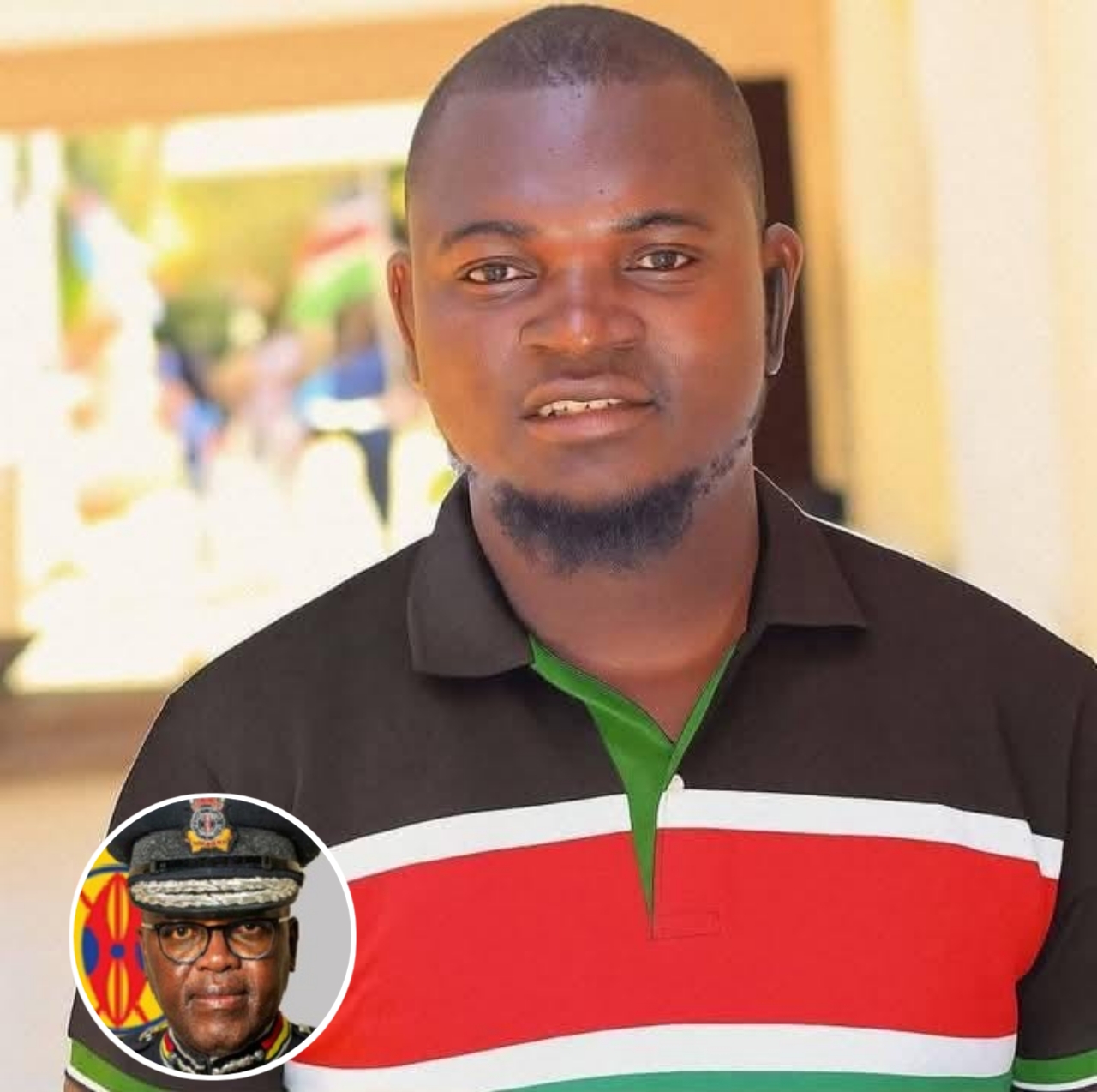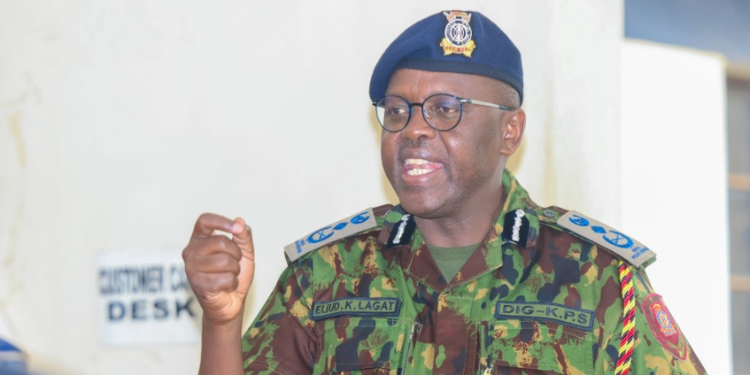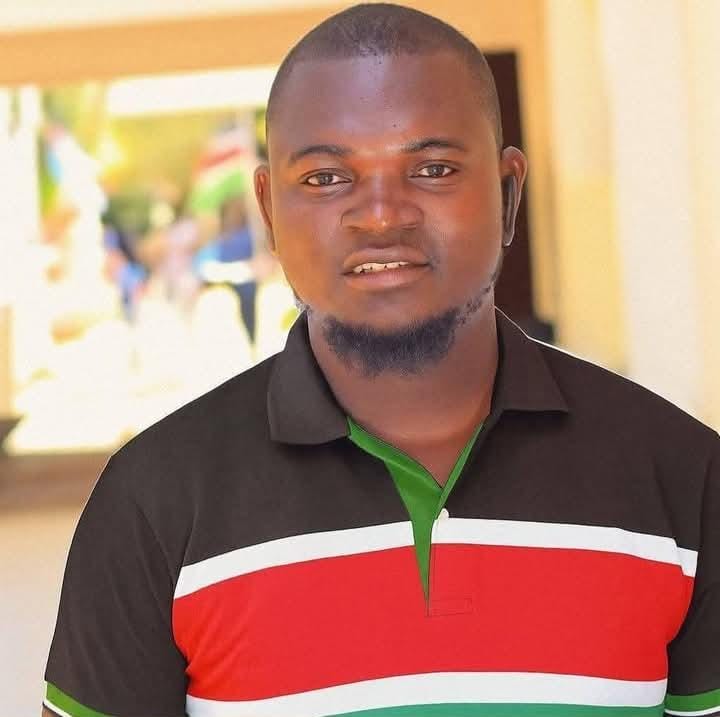The death of Albert Ojwang, a 31-year-old Kenyan teacher and blogger, in police custody on June 8, 2025, has ignited a firestorm of grief, outrage, and demands for justice across Kenya. Arrested for a social media post critical of a senior police official, Ojwang's body—bearing marks of torture—tells a story of brutality and betrayal that no official narrative can erase.
A Chronology of Tragedy
June 4, 2025
Deputy Inspector-General of Police Eliud Lagat filed a complaint with the Directorate of Criminal Investigations (DCI), alleging that Ojwang's X posts (@pixelpioneerai) accused him of corruption, claiming he was under investigation by the Ethics and Anti-Corruption Commission (EACC). The EACC later confirmed no such investigation existed.
Truth: The complaint targeted Ojwang's vocal criticism of powerful figures.
Whispers: Some speculate Lagat's complaint was a pretext for silencing a digital activist.
June 6, 2025, 1:30 PM EAT
Ojwang was at his family home in Kakoth Village, Homa Bay County, sharing lunch when six DCI officers arrived on three motorbikes. They identified themselves, assured the family Ojwang would be safe, and arrested him for "false publication." He was taken to Mawego Police Station, then driven 350 kilometers to Nairobi. A leaked audio of Ojwang's call to a friend captured his fear: "They're taking me to Nairobi."
Truth: The arrest stemmed from Ojwang's X post. Family spokesman Joseph Okumu confirmed the officers' assurances of safety.
Public Voice: The Law Society of Kenya (LSK) later condemned the arrest as an attempt to muzzle free speech.
Whispers: The long journey to Nairobi, bypassing local stations, suggests a deliberate plan to isolate Ojwang.
June 7, 2025, 9:35 PM EAT
Ojwang was booked at Nairobi's Central Police Station under Occurrence Book (OB) number 136/7/6/2025. Police claimed he was in stable condition. That night, he spoke to his father, Meshack, promising to meet him the next morning.
Lie: The claim of Ojwang's well-being was later debunked.
Cover-Up: The Independent Policing Oversight Authority (IPOA) found that CCTV systems at the station were tampered with, obscuring evidence.
June 7, 2025, 9:32 PM to June 8, 1:40 AM EAT
In Cell 3 at Central Police Station, Ojwang was murdered. IPOA's preliminary findings indicate a senior officer, whose shift ended at 8:00 PM, stayed until 3:00 AM, possibly overseeing the assault. Four officers allegedly held Ojwang upright when removing him from the cell to stage his survival.
Truth: A post-mortem later confirmed head trauma, neck compression, and multiple soft tissue injuries—marks of torture.
Public Voice: Amnesty Kenya called it "a calculated execution."
June 8, 2025, 1:35 AM EAT
CCTV footage from Mbagathi Hospital, aired by Citizen TV, showed a police vehicle arriving with Ojwang's body. Three officers exited, delayed seeking help for 24 minutes, and made phone calls. At 1:46 AM, a security guard was approached; at 1:59 AM, Ojwang was wheeled into the hospital. By 2:11 AM, medics confirmed he was dead—unresponsive, cold, with a swollen face and bruises.
Lie: The National Police Service (NPS) claimed Ojwang was found unconscious during a "routine cell inspection" at 1:39 AM and rushed to hospital. Hospital records disproved this.
Cover-Up: Conflicting OB entries—logging Ojwang's death at 3:45 AM after a 2:35 AM entry—suggest timeline manipulation.
June 8, 2025, Morning
Meshack Ojwang arrived at Central Police Station with a title deed, hoping to bail out his son. After hours of waiting, he was told Albert was dead. "They saw our humble home and thought we didn't matter," Meshack said, appealing to President Ruto: "Why was my child crucified?"
Truth: Meshack's plea galvanized public outrage on X.
Public Voice: His words resonated as a symbol of systemic disdain for ordinary Kenyans.
June 8, 2025, Evening
The NPS claimed Ojwang "hit his head against a cell wall," suggesting suicide. X users, including @SokoAnalyst, branded it an "extrajudicial killing," demanding accountability.
Lie: The suicide narrative was widely debunked.
Cover-Up: The OCPD and OCS at Central Police Station denied access to the cell, fueling suspicions.
June 9, 2025
Protests erupted outside Nairobi's City Mortuary, where Ojwang's body was held. Activists, chanting "Stop killing us," stormed the mortuary, delaying the autopsy to Tuesday. Police used tear gas and water cannons. Inspector-General Douglas Kanja suspended the station's OCS, duty officer, and others.
Truth: Five officers were interdicted, 23 questioned.
Public Voice: The Digital Content Creators Association of Kenya hailed Ojwang as "a voice of the youth."
Whispers: Suspensions都被视为分散对更高级别罪犯注意力的策略。
June 10, 2025
A post-mortem at Nairobi Funeral Home, conducted by five pathologists including Dr. Bernard Midia, revealed Ojwang died from head injury, neck compression, and widespread bruising—evidence of assault, not self-harm. "The injuries were externally inflicted," Midia said.
Truth: The autopsy exposed the police's lies.
Cover-Up Exposed: The Daily Nation called the suicide claim a "spectacular collapse."
June 11, 2025
Kanja retracted the suicide narrative, apologizing for "misinformation" before the Senate. President Ruto called the death "heartbreaking and unacceptable," ordering a "swift, transparent, and credible" investigation but cautioned against "premature judgments."
Public Voice: Raila Odinga dismissed Ruto's words as "empty," citing unpunished police killings.
Whispers: Ruto's caution was seen as shielding senior officers like Lagat.
June 12, 2025
Protests intensified in Nairobi, with vehicles set ablaze. Demonstrators demanded Lagat's resignation, chanting "Lagat must go." Police responded with tear gas. DCI director Mohammed Amin named Central Police Station commander Samson Talam as a key suspect.
Truth: A witness in an adjacent cell heard screams from Ojwang's cell.
Public Voice: Protesters linked Ojwang's death to last year's Gen Z protests, where dozens died.
June 13, 2025
Constable James Mukhwana, the cell sentry, was arrested and arraigned, with IPOA seeking 21 days' detention. A technician suspected of disabling CCTV was detained. Protests continued, with businessesDietrich关闭在Nairobi。
Truth: Court papers alleged Mukhwana planned the killing and tampered with CCTV.
Whispers: IPOA's focus on a senior officer's extended shift suggested higher-level involvement.
June 14, 2025
Samson Talam was arrested in Eldoret. CCTV footage from Mbagathi Hospital, released publicly, confirmed Ojwang was dead on arrival, deepening public anger. IPOA hinted at questioning Lagat.
Truth: The footage exposed police delays and lies.
Whispers: Lagat's role remained unclear, fueling speculation of a cover-up.
June 15, 2025
The National Assembly's Committee on Administration and Internal Security, chaired by Gabriel Tongoyo, prepared to table a report on Ojwang's death. President Ruto, at a church service in Kakamega, criticized the opposition, including former Deputy President Rigathi Gachagua, as "planless," prompting expectations of a response.
Public Voice: The report was anticipated to address a "web of conspiracies."
Whispers: Ruto's deflection was seen as avoiding accountability.
June 16, 2025
On Monday, June 16, 2025, the investigation into Albert Ojwang's murder took significant turns, intensifying public outrage and speculation. Deputy Inspector-General of Police Eliud Lagat, whose complaint against Ojwang's social media post sparked the chain of events leading to his death, announced he would step aside from his duties pending the investigation. This move came amid mounting pressure from protesters chanting "Lagat must go" and widespread calls for accountability, as many believed his initial complaint was a pretext to silence Ojwang’s criticism of corruption. Some speculate Lagat's decision to step aside was a strategic retreat to deflect scrutiny, though it did little to quell public fury.
President William Ruto personally called Meshack Ojwang, Albert’s grieving father, in what was described as a condolence call. However, whispers on X and among activists suggest Ruto’s outreach could be an attempt to buy Meshack’s silence or sway public perception, given the president’s history of deflecting blame in high-profile cases. Meshack, devastated by his son’s death, had earlier spoken out, saying, “They saw our humble home and thought we didn’t matter,” and appealed directly to Ruto: “Why was my child crucified?” His words continued to resonate, amplifying demands for justice.
Constable James Mukhwana, the cell sentry at Nairobi’s Central Police Station where Ojwang was killed, issued a statement through his lawyer, claiming he was following orders and had no direct role in the assault. Court papers, however, allege Mukhwana was complicit in planning the killing and tampering with CCTV footage to obscure evidence. The Independent Policing Oversight Authority (IPOA) noted that a senior officer, possibly linked to Mukhwana’s actions, stayed at the station until 3:00 AM on the night of the murder, well past their shift, suggesting higher-level involvement. Mukhwana’s arrest and the ongoing detention of a technician suspected of disabling CCTV further deepened suspicions of a cover-up orchestrated by senior officials.
Truth: Lagat’s step-aside and Mukhwana’s arrest marked progress in the investigation, but CCTV footage from Mbagathi Hospital, showing a 24-minute delay by officers before seeking help for Ojwang’s lifeless body, confirmed police negligence.
Public Voice: Meshack’s plea and Mukhwana’s statement fueled public distrust, with many on X calling the case an "extrajudicial killing" and linking it to systemic police brutality.
Whispers: Speculation persists that Ruto’s call to Meshack was an attempt to mitigate political fallout, while Lagat’s role and potential protection by the administration remain under scrutiny.
A System Rotten to the Core
Ojwang's death is not a solitary tragedy but a symptom of systemic rot. IPOA's report of 20 custodial deaths in four months underscores a police force operating with impunity. Ojwang, a father and former teacher who blogged about corruption, joins a grim list of silenced activists. His case echoes last year's Gen Z protests, where dozens died or disappeared. The arrests of Mukhwana and Talam, while notable, are seen as scapegoating junior officers to shield figures like Lagat, who remains in his post.
Ruto's pledges of a "transparent" investigation and protection from "rogue officers" ring hollow. His caution against "premature judgments" feels like a deflection, while tampered CCTV, delayed hospital transport, and fabricated logs point to a cover-up. International calls from the U.S. and EU for a transparent probe add pressure, but Kenya's history of unpunished police brutality casts a long shadow.
By the Numbers:
- 6 DCI officers arrested Ojwang.
- 350 km journey to Nairobi.
- 20 custodial deaths in four months.
- 5 officers interdicted, 2 arrested, 23 questioned.
A Call for Accountability
Albert Ojwang deserved to live. A teacher, a father, a truth-teller, he was tortured and killed for his courage. His broken body is a mirror to Kenya's soul, reflecting a system that crushes its brightest voices. President Ruto, with his empty promises and shielded officials, presides over this failure. The streets of Nairobi, alive with cries of "Stop killing us" and "Lagat must go," demand more than words. Ruto must go, and with him, the rot that festers under his rule. Justice for Ojwang is a reckoning Kenya cannot afford to ignore.
Sources: BBC, Daily Nation, The Standard, TUKO.co.ke, Citizen TV, Kenyans.co.ke, People Daily, AP News, Reuters, The Guardian, Al Jazeera, NPR, CNN, RFI, The Star, KBC, K24 Digital, Washington Post, and posts on X. This article reflects events and public sentiment as of June 16, 2025, 4:40 PM EAT.


